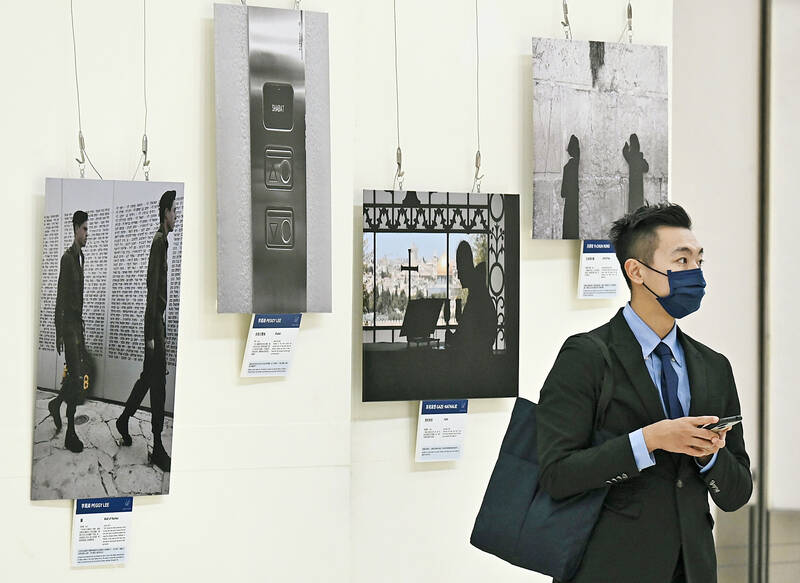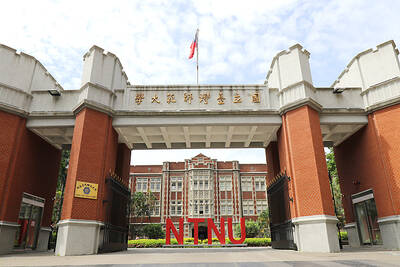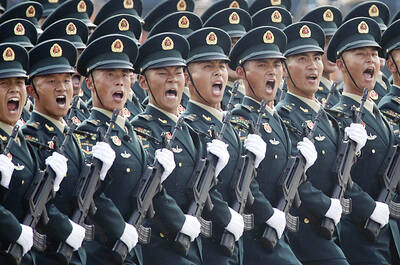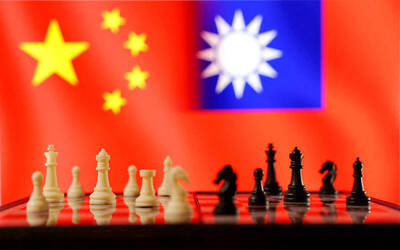A “Meet Israel Through Taiwanese Eyes” exhibition that features photographs taken by Taiwanese traveling in Israel is being held to celebrate three decades of friendship between the two sides, Israeli Representative to Taiwan Omer Caspi said yesterday at an event ahead of the first day of the exhibition tomorrow.
The exhibition, which is in Taipei Chiang Kai-shek Memorial Hall, features photos that capture the true Israel in the eyes of Taiwanese visitors, said Caspi, who heads the Israel Economic and Cultural Office in Taipei (ISECO).
“The 30 photos symbolize 30 years of friendship between Israel and Taiwan,” he said, adding that the diversity and multiculturalism of Israel as well as its beautiful landscape and rich history are “marvelously reflected in this collection.”

Photo: Tu Chien-jung, Taipei Times
Deputy Minister of Foreign Affairs Tien Chung-kwang (田中光) said that Taiwan and Israel face similar challenges in defending their way of life, and have shared values of democracy, freedom and human rights.
The two countries have signed 31 memorandums of understanding in areas of education, technology, medicine and agriculture over the past three decades, and more are to come, he said, adding that he hopes bilateral relations would continue to grow.
The event is to celebrate the 30th anniversary of the inauguration of ISECO, which was established in 1993 to strengthen exchanges between Israel and Taiwan in the absence of official diplomatic ties.
Taiwan also opened a representative office in Tel Aviv that same year.
The 30 photos were selected from 150 submissions, ISECO said.
The exhibition runs until March 12.
After being displayed in Taipei, the exhibit would tour other areas of the nation so more people can enjoy it, ISECO added.

Taiwan yesterday condemned the recent increase in Chinese coast guard-escorted fishing vessels operating illegally in waters around the Pratas Islands (Dongsha Islands, 東沙群島) in the South China Sea. Unusually large groupings of Chinese fishing vessels began to appear around the islands on Feb. 15, when at least six motherships and 29 smaller boats were sighted, the Coast Guard Administration (CGA) said in a news release. While CGA vessels were dispatched to expel the Chinese boats, Chinese coast guard ships trespassed into Taiwan’s restricted waters and unsuccessfully attempted to interfere, the CGA said. Due to the provocation, the CGA initiated an operation to increase

CHANGING LANDSCAPE: Many of the part-time programs for educators were no longer needed, as many teachers obtain a graduate degree before joining the workforce, experts said Taiwanese universities this year canceled 86 programs, Ministry of Education data showed, with educators attributing the closures to the nation’s low birthrate as well as shifting trends. Fifty-three of the shuttered programs were part-time postgraduate degree programs, about 62 percent of the total, the most in the past five years, the data showed. National Taiwan Normal University (NTNU) discontinued the most part-time master’s programs, at 16: chemistry, life science, earth science, physics, fine arts, music, special education, health promotion and health education, educational psychology and counseling, education, design, Chinese as a second language, library and information sciences, mechatronics engineering, history, physical education

The Chinese military has boosted its capability to fight at a high tempo using the element of surprise and new technology, the Ministry of National Defense said in the Quadrennial Defense Review (QDR) published on Monday last week. The ministry highlighted Chinese People’s Liberation Army (PLA) developments showing significant changes in Beijing’s strategy for war on Taiwan. The PLA has made significant headway in building capabilities for all-weather, multi-domain intelligence, surveillance, operational control and a joint air-sea blockade against Taiwan’s lines of communication, it said. The PLA has also improved its capabilities in direct amphibious assault operations aimed at seizing strategically important beaches,

‘MALIGN PURPOSE’: Governments around the world conduct espionage operations, but China’s is different, as its ultimate goal is annexation, a think tank head said Taiwan is facing a growing existential threat from its own people spying for China, experts said, as the government seeks to toughen measures to stop Beijing’s infiltration efforts and deter Taiwanese turncoats. While Beijing and Taipei have been spying on each other for years, experts said that espionage posed a bigger threat to Taiwan due to the risk of a Chinese attack. Taiwan’s intelligence agency said China used “diverse channels and tactics” to infiltrate the nation’s military, government agencies and pro-China organizations. The main targets were retired and active members of the military, persuaded by money, blackmail or pro-China ideology to steal